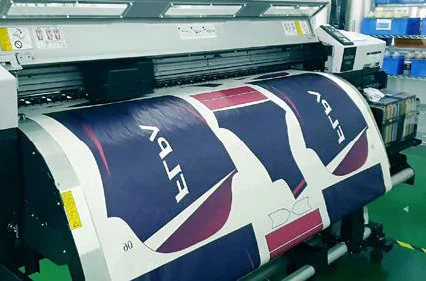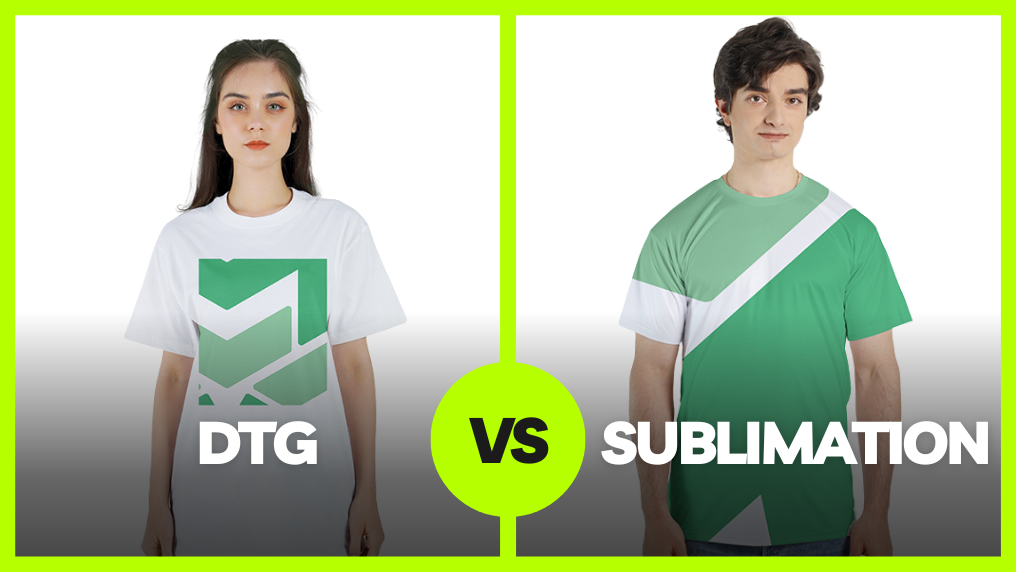Discovering the Advantages of Sublimation Printing for High-Quality Fabrics
Discovering the Advantages of Sublimation Printing for High-Quality Fabrics
Blog Article
From Standard to Digital: Comprehending the Evolution of Fabric Printing
The transformation of fabric printing from traditional approaches like block printing and resist dyeing to contemporary techniques such as screen and electronic printing marks a significant shift in the textile market. Just how do these innovations affect the significance of cloth printing, and what might the future hold for this ever-evolving craft?
Traditional Cloth Printing Approaches
In the early phases of textile manufacturing, conventional cloth printing approaches served as the cornerstone of textile design, providing both functionality and creative expression. Block printing, one of the oldest techniques, involved sculpting elaborate layouts into wood blocks, which were then dipped in color and pressed onto textile.
Withstand dyeing, consisting of strategies like batik and tie-dye, employed wax or various other substances to avoid color from passing through specific locations of the fabric. This method produced striking contrasts and elaborate designs, frequently imbued with social value. Stenciling, one more typical method, entailed reducing patterns right into a material and using color with the openings, offering a simpler yet effective way to create recurring layouts.
These conventional methods not only formed the fabric sector's very early advancement yet additionally laid the groundwork for future technologies. Each strategy showed the local and social features of its origin, preserving and distributing artisanal understanding with generations.
The Increase of Display Printing
The advent of display printing in the early 20th century marked a significant departure from conventional approaches, providing unprecedented versatility and performance. Screen printing allowed designers to generate intricate patterns and dynamic colors on fabrics, which were formerly challenging to achieve with block printing or hand-painting approaches.
Among the vital benefits of screen printing is its capacity to duplicate intricate styles on a big range with remarkable integrity. This scalability made it profoundly preferred in the industrial fabric market, where automation without compromising quality is paramount. In addition, screen printing accommodates a vast array of inks and dyes, expanding the palette of structures and coatings offered to developers.
In addition, the procedure is extremely versatile, suitable for different textile types consisting of cotton, silk, and synthetics. This flexibility, combined with its cost-efficiency for big runs, solidified display printing's duty as a keystone of contemporary fabric manufacturing. Hence, the rise of screen printing changed the industry, pressing the limits of what was feasible in fabric layout.

The Introduction of Digital Printing
Structure on the impressive advancements brought by screen printing, the textile industry experienced one more groundbreaking advancement with the arrival of digital printing. Emerging in the late 20th century, electronic printing revolutionized the way layouts are moved onto materials, using extraordinary flexibility and effectiveness. Unlike conventional methods, which usually needed comprehensive setup and significant manual intervention, digital printing utilizes computer-aided style (CAD) innovation to produce intricate patterns straight onto the material with high precision.
This development has enabled fabric suppliers to fulfill the expanding demand for customization important site and on-demand production. By getting rid of the need for screens and plates, digital printing minimizes and lowers lead times product waste, making it a more sustainable option. The capacity to print intricate pictures and a wide array of shades in a solitary pass has actually opened up new creative methods for designers, promoting a surge in imaginative expression within the market.
Furthermore, electronic printing sustains smaller sized set production runs, which is specifically useful for specific niche markets and start-up fashion brands. This technological jump has not only enhanced operational effectiveness yet additionally equalized accessibility to high-quality textile printing, setting the phase for future innovations in textile layout and manufacturing.
Comparing Strategies: Typical Vs. Digital
While both digital and traditional printing methods have their very own special benefits, they differ substantially in terms of process, effectiveness, and ecological influence. Traditional towel printing, encompassing methods like block printing and screen printing, includes hand-operated labor and detailed workmanship.
In comparison, electronic printing uses innovative innovation to move layouts directly onto material using inkjet printers. This approach uses unequaled accuracy and a large variety of shade options, allowing complex and extremely comprehensive designs. Digital printing is dramatically much faster, enabling quick turn-arounds and just-in-time production, which reduces the demand for huge inventory storage. Furthermore, it supports personalization and small look at this web-site batch manufacturing, dealing with modern customer demands for personalized items.
From an environmental viewpoint, digital printing is typically a lot more lasting. It uses much less water and generates very little waste compared to standard approaches, which typically entail substantial cleaning and dyeing procedures. Consequently, digital printing is significantly favored in an era where environmental factors to consider are paramount.
Future Trends in Fabric Printing
One considerable fad is the increased application of digital printing technologies. Digital fabric printing is anticipated to control the market, driven by its efficiency and versatility to customer needs for individualized and limited-edition items. Branded clothing.

Furthermore, the incorporation of smart fabrics, which integrate electronic components right into materials, is readied to reinvent the marketplace. These textiles can supply additional capabilities such as temperature law, health and wellness monitoring, and interactive functions. As modern technology proceeds to advancement, the junction of digital printing and smart textiles will open new methods for creative and practical applications in cloth printing.
Final Thought
The evolution of cloth printing from typical methods to electronic innovations notes a substantial improvement go to my site in the textile sector. While typical strategies highlight artisanal workmanship and cultural heritage, digital printing offers unrivaled precision, efficiency, and modification.
The makeover of fabric printing from conventional approaches like block printing and withstand coloring to modern techniques such as screen and electronic printing marks a considerable change in the textile sector. Screen printing made it possible for developers to create intricate patterns and vivid colors on textiles, which were previously testing to accomplish with block printing or hand-painting methods.
Structure on the amazing developments brought by screen printing, the textile market experienced an additional groundbreaking development with the development of electronic printing. screen printing. Standard towel printing, including techniques like block printing and screen printing, involves hands-on labor and detailed craftsmanship. As innovation continues to advancement, the intersection of digital printing and smart textiles will open up brand-new methods for practical and creative applications in towel printing
Report this page